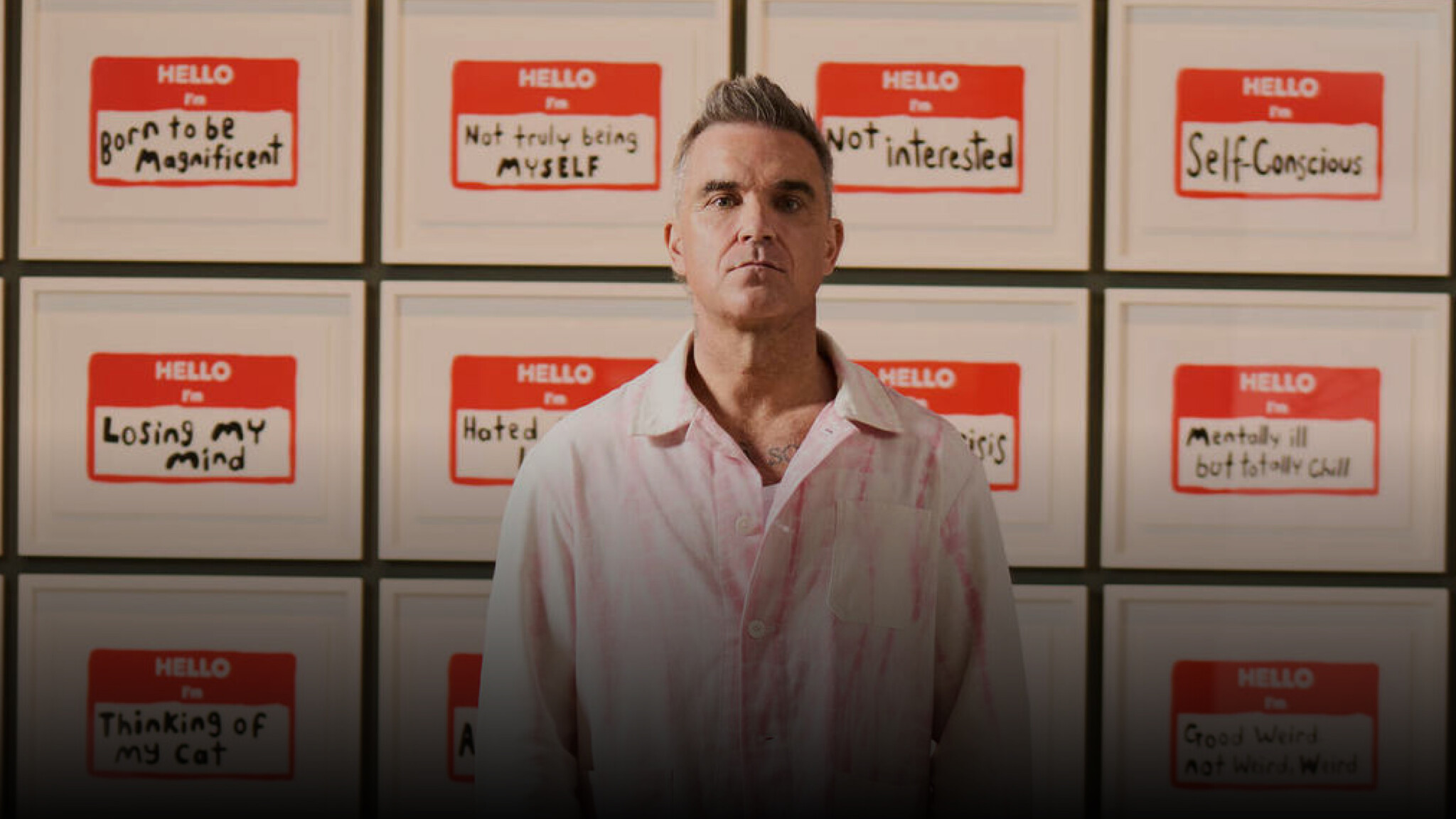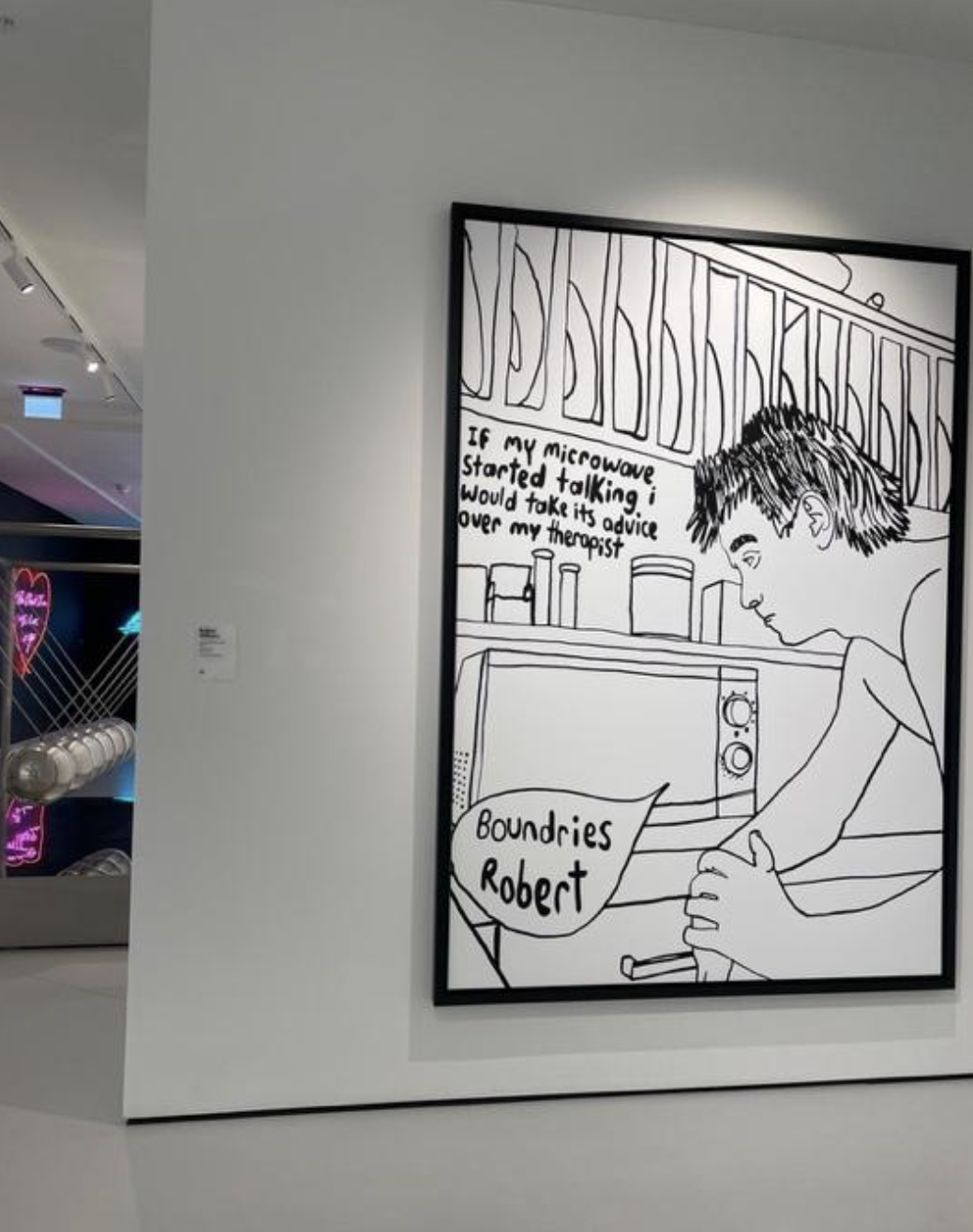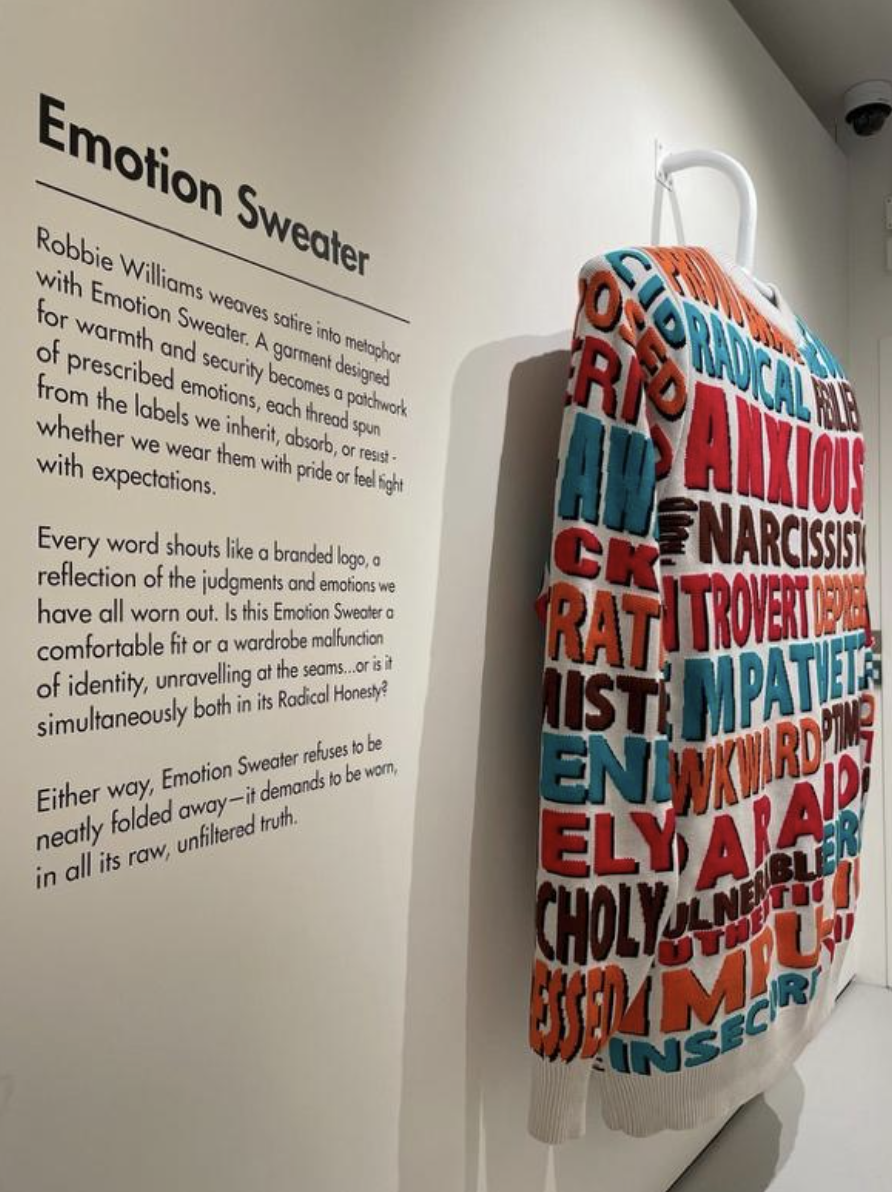
Obsessions with luminous personalities have long structured art historical texts. Pablo Picasso, Paul Gauguin, Leonardo Da Vinci. Magnetic personalities draw the audience into juicy webs of human fascination. For this reason, it is perhaps no surprise that popstars are elevated via temporary exhibitions to the status of fine artist. The rebranding of Robbie Williams – the effervescent former member of the British boyband Take That – firmly fits into this category.
Enjoy independent, ad-free journalism - delivered to your inbox each week

Much criticism can be aired about his solo exhibition Radical Honesty (2 May – 24 October 2025) at MOCO, London. Stern words to ridicule a nonsensical microwave canvas would be justified. Line-drawing self-portraits depict Robbie in his daily life, accompanied by writing that represents his inner dialogue. One of them shows him leaning towards a microwave. The text reads: “If my microwave started talking i would take its advice over my therapist”. Sure enough, a speech bubble protrudes from the microwave: “Boundaries Robert”. The work is perhaps intended to be a light-hearted take on mental health, but the result is not only confusing but valueless.
Another section features a so-called “Emotion Sweater”: an enlarged woolly jumper woven with words and phrases such as “ANXIOUS”, “RADICAL HONESTY”, and “AWKWARD” plastered across in lines. The wall text explains that Williams “weaves satire into metaphor” for this piece, and the resultant conglomeration of hoary words are packaged as a form of radical honesty. It is difficult to pinpoint exactly where Williams’ hand lies in the production of this machine-made object. Its message is predictable, unoriginal, yawn-worthy, and the childish wall text only elaborates on the cringeworthiness. The sweater showcases the embarrassingly few words that crop up repeatedly around the exhibition, evidencing Williams’ desperate deprivation of a thesaurus.

Conservatives would rightly question the credential of Williams as a fine artist. Debates about the distinction between art and non-art are mostly articulated by right-wing critics in order to admonish the political statements packaged as “art” in public institutions such as the Tate. Williams’ exhibition is so firmly centered on his self that the radicality stipulated in the title could only describe a narcissistic exercise rather than a progressive restructuring of society. (For good measure, one of the words included in the “Emotion Sweater” is “NARCISSISM”).
The exhibition title – Radical Honesty – promises nothing and delivers even less. The word “radical” crops up to such an extent in academic discourse that steals itself of meaning. In postmodern terms, “radical” discourse is that which demands the restructuring of society; an outward impact-striven act. Williams understands the term as an “authentic” expression of the self. The introductory wall text provides a definition in the form of a question:
What happens when you strip away the filters, the facades, the carefully curated image of yourself? Radical Honesty.
This sets the tone for the entire exhibition. Visitors are promised to expect, “Anxiety, self-love, introversion, morning affirmations”. Politicization is not progressive, but situated in indulgent self-help culture. The following artworks are text-heavy explorations of Williams’ own problems, all of which clearly relate to narcissism. One of the canvases includes the lines: “Yes you are self centred”, followed by “But what a marvellous self to be centred on”. Another canvas declares: “I will not be honouring my commitments today and I will be feeling marvelous about it”. Moreover, the artistic “merit” of the underlaid images is questionable, to say the least. Childish white clouds against a cobalt-blue flat sky, reminiscent of my bored dabbling with Microsoft Paint in the early 2000s.

The title Radical Honesty suggests that the reader will be presented with the truth. However, the more valuable messages relate to the motivation of MOCO in its institutional endorsement of Williams’ own narcissism. Galleries are sacred spaces for the privileging of some perspectives over others. As a private enterprise, MOCO has perhaps more agency in which type of “art” it seeks to platform, without recourse to a public board. Without the necessity to appease public obligations, such as those stipulated in the Equality Act 2010, the result is refreshingly non-progressive in a radical sense. Resultant, however, is the atomization and inflation of self on a grand scale. The whole exhibition reads as a child’s playground. Media is so mixed as to refuse the development of any specialism, either as a craft or philosophical message. The id as the childish impulse is granted full reign.
I am forgiving of Williams, however. The message is repeated throughout that he uses art for therapeutic purposes. What is wrong is why these exhibits are grouped together and packaged as a serious body of works. Williams references his own narcissism and accusations of such throughout, suggesting a level of self-awareness; despite his seeming conclusion that narcissism should be embraced, evidence further of societal atomization. For those in any doubt, I would urge you to watch the Netflix documentary about Williams released in November 2023. It proves difficult viewing due to his flagrant self-centeredness, pursued relentlessly at the expense of others. Elevation to the screen and now an exhibition surely only soothes and encourages this ego, which in the past was fueled by alcohol and drugs.
Excess consumption feeds excess consumption, both at the level of individual personality and society-wide. Eventually, such destructive patterns eat people up. Many artworks in MOCO develop the theme of commercialized society. Consumer culture is explored in the work of Andy Warhol, for example. The audio guide explains how Warhol predicted that, “In the future, everyone will be world-famous for 15 minutes.” This is contextualized in his embrace of mass production in his art. Arguably, Radical Honesty is the authentic expression of this trend due to its deception about the reason why it has been staged. The personality cult of the artist has shifted to celebrity hero worship, but insofar as celebrities constitute opportunities for profit by large companies.
MOCO commercializes Williams in order to milk another fifteen minutes of fame off the back of his musical career. The extent to which Williams will be run dry is a lingering question, but certainly one that leads to his ridicule. Similarly, the documentary about Williams and the MOCO exhibition are akin to the Meghan Markle series on Netflix; artificial shiny veneer that seeks not to provide authenticity – despite glaring claims – but rather profit from the allure and the brand of the protagonist. Let’s face it, no serious art critic attends Radical Honesty in the belief that they will discover artistic vision. The intrigue of person provides the superficial hook, which bores as quickly as it sparks attention.
Anyone can produce art, but not everyone is a fine artist. Williams – along with other celebrities who found their own disparate companies unrelated to the original reasons that propelled their public careers – is personality marketed to the masses. Yet, without the training of craft, Williams can speak only to himself. This is symptomatic of a wider dilution of professionalism and hierarchies in society, aided by a pusillanimous disinclination to call out bad art for fear of injustice. The real winners in these situations are not the victims, but the institutions who milk personality and public persona for profit.




Comments (0)
Only supporting or founding members can comment on our articles.